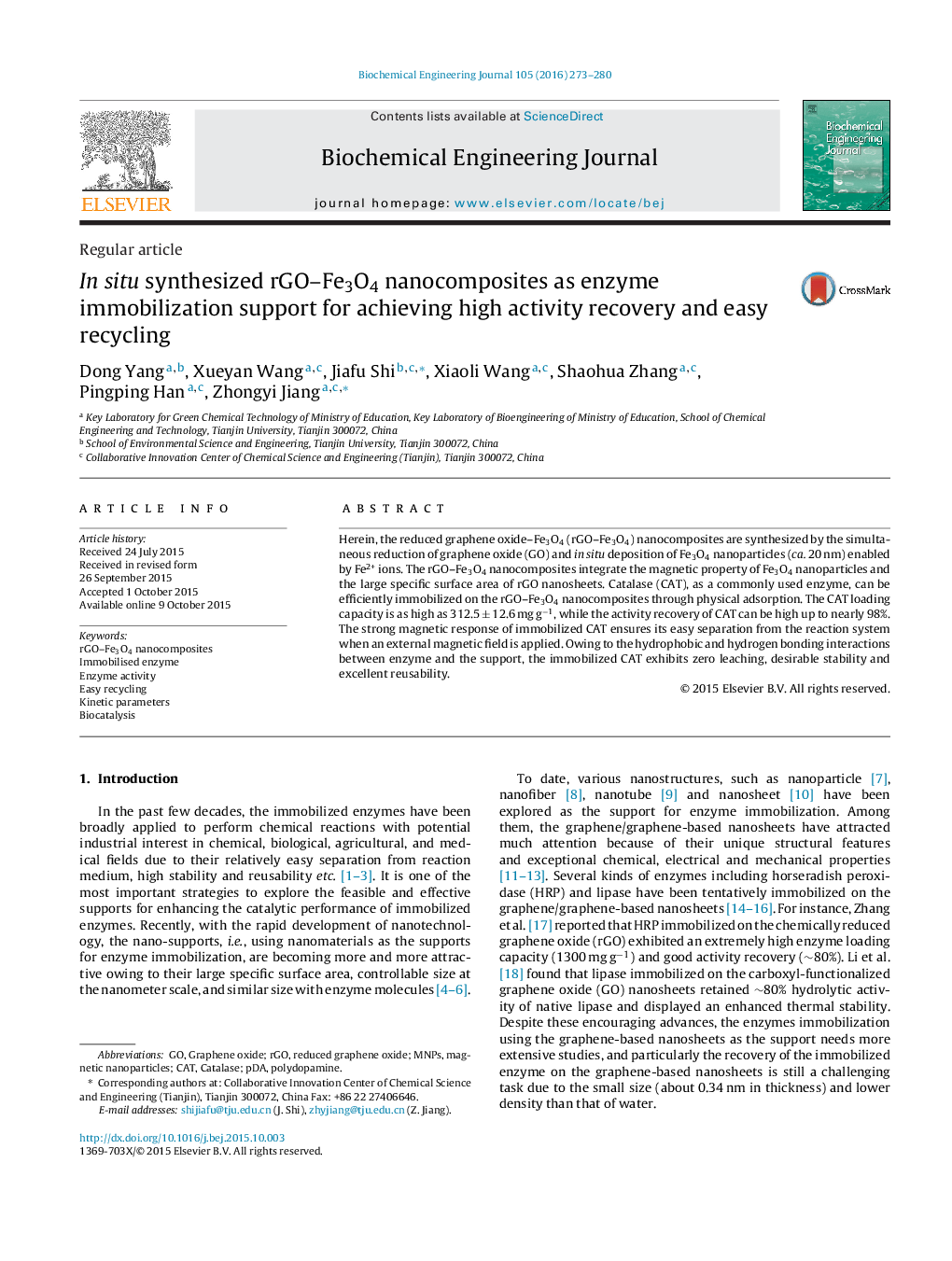| کد مقاله | کد نشریه | سال انتشار | مقاله انگلیسی | نسخه تمام متن |
|---|---|---|---|---|
| 2828 | 136 | 2016 | 8 صفحه PDF | دانلود رایگان |

• The rGO–Fe3O4 nanocomposites are in situ synthesized via a metal ion-induced method.
• Catalase is immobilized on the rGO–Fe3O4 nanocomposites through physical adsorption.
• The immobilized CAT shows zero leaching, high activity recovery and excellent reusability.
Herein, the reduced graphene oxide–Fe3O4 (rGO–Fe3O4) nanocomposites are synthesized by the simultaneous reduction of graphene oxide (GO) and in situ deposition of Fe3O4 nanoparticles (ca. 20 nm) enabled by Fe2+ ions. The rGO–Fe3O4 nanocomposites integrate the magnetic property of Fe3O4 nanoparticles and the large specific surface area of rGO nanosheets. Catalase (CAT), as a commonly used enzyme, can be efficiently immobilized on the rGO–Fe3O4 nanocomposites through physical adsorption. The CAT loading capacity is as high as 312.5 ± 12.6 mg g−1, while the activity recovery of CAT can be high up to nearly 98%. The strong magnetic response of immobilized CAT ensures its easy separation from the reaction system when an external magnetic field is applied. Owing to the hydrophobic and hydrogen bonding interactions between enzyme and the support, the immobilized CAT exhibits zero leaching, desirable stability and excellent reusability.
Figure optionsDownload as PowerPoint slide
Journal: Biochemical Engineering Journal - Volume 105, Part A, 15 January 2016, Pages 273–280